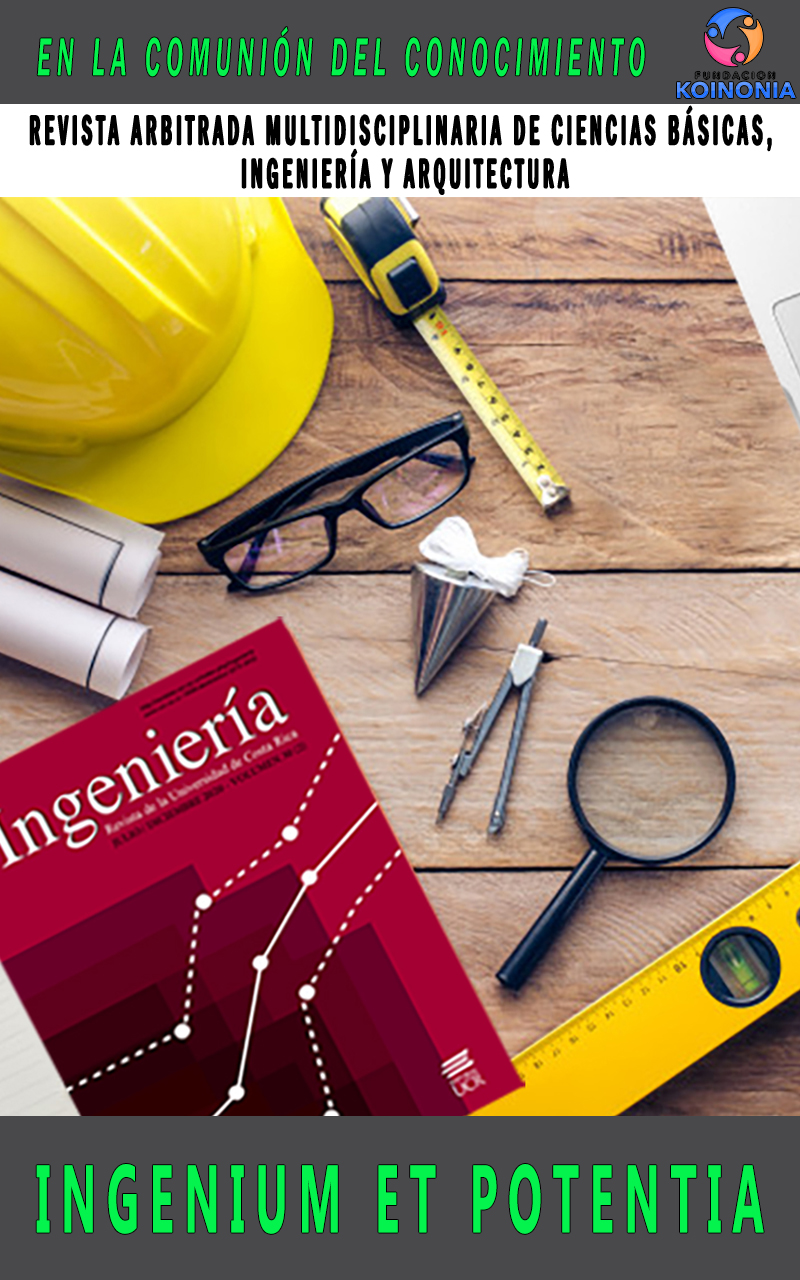Recycled plastic formwork for circular concrete columns
DOI:
https://doi.org/10.35381/i.p.v5i8.2434Keywords:
Construction engineering, waste treatment, retraining., (UNESCO Thesaurus)Abstract
The use of formwork in construction is very time consuming and can account for between 20 and 25% of the total cost of the project. The traditional materials for the elaboration of formworks are wood and metal, which generates that the formworks are heavy and demand great physical effort for their implementation. This article analyzes the feasibility of using type 2 recycled plastic as raw material for the production of formwork. To determine if the material can withstand the loads and stresses to which the formworks are subjected, an analysis is carried out using the SAP 2000 software. The results indicate that the formwork made from type 2 plastic supports the loads and stresses that the casting of the concrete transmits it, which makes it a viable alternative both at an environmental, technical and economic level.
Downloads
References
Buyle, M., Braet, J., & Audenaert, A. (2013). Life cycle assessment in the construction sector: A review. Renewable and Sustainable Energy Reviews, 26, 379–388. https://doi.org/10.1016/j.rser.2013.05.001
Cañola, H. D., Granda-Ramírez, F., & Quintero-García, K. L. (2021). Aprovechamiento de residuos en la construcción de galpones como alternativa de sostenibilidad en el corregimiento El Prodigio, en San Luis, Antioquia-Colombia [Use of waste in the construction of sheds as a sustainability alternative in the village of El Prodigio, in San Luis, Antioquia-Colombia]. Tecnológicas, 24(51), e1830. https://doi.org/10.22430/22565337.1830
Feitó Cespón, M. (2020). La construcción de escenarios utilizando un sistema de inferencia difuso para la optimización estocástica del rediseño de la cadena de suministro de reciclaje [Scenario construction using a fuzzy inference system for stochastic optimization of recycling supply chain redesign]. Ingeniare. Revista Chilena de Ingeniería, 28(3), 476–498. https://doi.org/10.4067/S0718-33052020000300476
Hildebrandt, J., Hagemann, N., & Thrän, D. (2017). The contribution of wood-based construction materials for leveraging a low carbon building sector in europe. Sustainable Cities and Society, 34, 405–418. https://doi.org/10.1016/j.scs.2017.06.013
Jipa, A., & Dillenburger, B. (2022). 3D Printed Formwork for Concrete: State-of-the-Art, Opportunities, Challenges, and Applications. 3D Printing and Additive Manufacturing, 9(2), 84–107. https://doi.org/10.1089/3dp.2021.0024
Jipa, A., Giacomarra, F., Giesecke, R., Chousou, G., Pacher, M., Dillenburger, B., Lomaglio, M., & Leschok, M. (2019). 3D-printed formwork for bespoke concrete stairs. Proceedings of the ACM Symposium on Computational Fabrication, 1–12. https://doi.org/10.1145/3328939.3329003
Jolly, D., Eyquem, M., & Jolly, V. (2011). Encofrados flexibles: Otra forma para el hormigón [Flexible formwork: Another way for concrete]. ARQ (Santiago), 78, 58–67. https://doi.org/10.4067/S0717-69962011000200009
Quintos-Andrade, G., Torres, F., & Vivyan, P. (2021). Observation of Megachile saulcyi (Guérin-Méneville, 1844) (Hymenoptera: Megachilidae) using plastic for nest construction in Chile. REVISTA CHILENA DE ENTOMOLOGÍA, 47(2), 201–204. https://doi.org/10.35249/rche.47.2.21.04
Rudeli, N., & Santilli, A. (2017). Medición de resistencia a tempranas edades del hormigón: método que mejor se ajusta para la determinación de tiempos mínimos de desencofrado de elementos verticales de hormigón [Measurement of resistance at early ages of concrete: method that best fits for the determination of minimum stripping times of vertical concrete elements]. Obras y Proyectos, 22, 6–16. https://doi.org/10.4067/S0718-28132017000200006
Serrano Corral, A., & Martínez Calzón, J. (2021). Una revisión biográfica y significativa de las estructuras mixtas de hormigón y acero estructural [A biographical and significant review of the mixed structures of concrete and structural steel]. Hormigón y Acero, 72(293), 7–29. https://doi.org/10.33586/hya.2020.2023
Skoratko, A., & Katzer, J. (2021). Harnessing 3D Printing of Plastics in Construction—Opportunities and Limitations. Materials, 14(16), 4547. https://doi.org/10.3390/ma14164547
Universidad Católica de Cuenca. (2022). Fab Lab Universidad Católica de Cuenca.
Published
How to Cite
Issue
Section
License
Copyright (c) 2023 Jorge Antenor Martínez-Fernández, Eduardo Dioney Palma-Zambrano, Juan Sebastián Maldonado-Noboa, Pablo Esteban Ramos-Coronel

This work is licensed under a Creative Commons Attribution-NonCommercial-ShareAlike 4.0 International License.
CC BY-NC-SA : Esta licencia permite a los reutilizadores distribuir, remezclar, adaptar y construir sobre el material en cualquier medio o formato solo con fines no comerciales, y solo siempre y cuando se dé la atribución al creador. Si remezcla, adapta o construye sobre el material, debe licenciar el material modificado bajo términos idénticos.
OAI-PMH URL: https://fundacionkoinonia.com.ve/ojs/index.php/ingeniumetpotentia/oai








